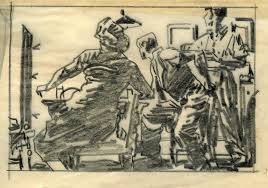From Richardson’s book on Emerson teaching writing;”First We Read, Then We Write.” It says art but say boarding instead.
“Art is the path of the creator to his work. “One cannot repeat it enough; art is not the finished work, art is the getting there. This is why good schools believe in art education, in doing art as well as art history. This is why we give children finger paints; it is the process of expressing that we value, along with-or even more than-the finished work, which as Emerson believes observes, passes at once into the mortuary state once completed and detached from its creator, unless, like a seed, it be good for starting the process all over again. “The painter, the sculptor, the composer the epic rhapsodist, the orator, all partake one desire to express themselves symmetrically and abundantly, not and fragmentarily.”



You must be logged in to post a comment.